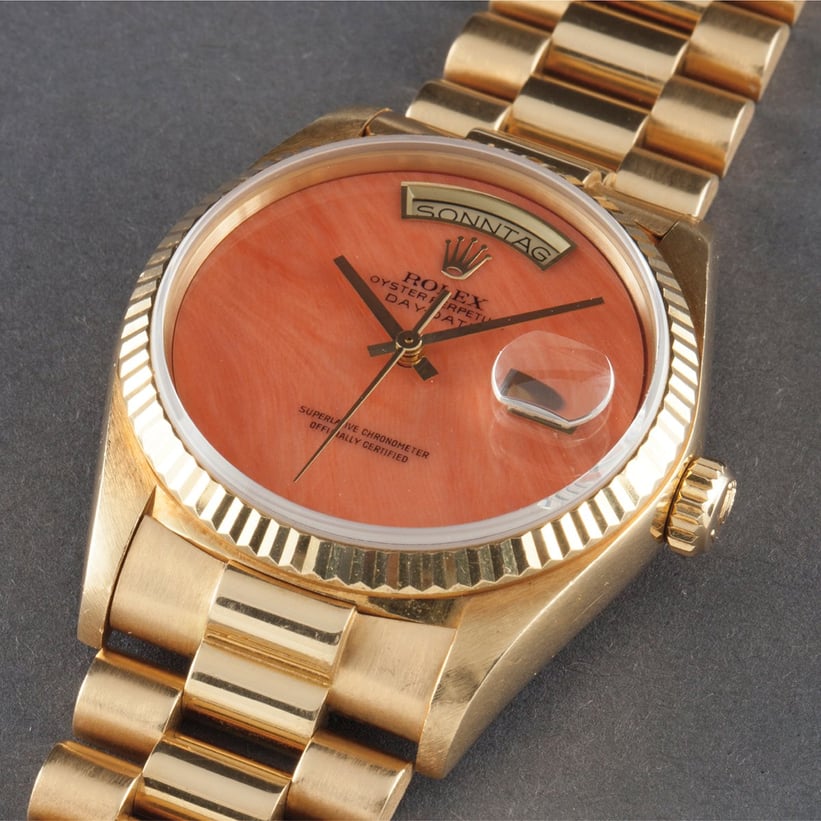There are several horological milestones being celebrated in 2015 – 40 years of the ‘Bulgari Bulgari’ watch, for example, and a decade since the launch of the original, square-cased Bell & Ross BR-01. But perhaps more significant is that this is the 60th year of production of the flagship Rolex, the Day-Date.
At last month’s Baselworld show, Rolex unveiled a 'refreshed' version of the legendary model it launched in 1956, upping the case size from the traditional 36mm to 40 and fitting the new Calibre 3255 movement with 70 hours of power reserve behind laser-etched, sunray dials with a choice of Roman numerals or plain markers. Even the bracelet has had an upgrade, and now comes with ceramic ‘sleeves’ for added suppleness and longevity.
The heart of the matter, quite literally



But at the heart of the matter remains the still-impressive function from which the Day-Date derives its name: the ability to show the date together with the day of the week in its entirety, the two perfectly synchronised displays simultaneously adjusting on the stroke of midnight – and in any one of 26 languages, too.
It still appears magical today, so imagine how extraordinary the function must have seemed when Rolex introduced it in 1956. Until then, no other watch manufacturer had attempted to design the complex mechanism that would not only enable the day and date to be displayed in independent windows, but which would also enable the day to be written in full.
And the Day-Date’s status is now set to be further elevated in May, when it becomes the subject of a ‘theme’ auction held by the newly formed Phillips watch department, led by former Christie’s star Aurel Bacs.
A dedicated auction



Dubbed ‘The Glamorous Day-Date’, the Geneva sale will feature an age-appropriate 60 examples of the model, among them rare and early versions and others with royal provenance that have been selected from across four continents.
Highlights include a platinum-cased Reference 1831 that is believed to have been commissioned for the Shah of Iran during the mid-1970s. One of eight known to have been made, it is tipped to fetch up to 240,000 CHF and features a diamond-set bezel and a burgundy ‘Stella’ dial with diamond hour-markers.
The left-field choice



The only known ‘left-handed’ Day-Date is also up for grabs (50,000 - 100,000 CHF), as well as a selection of watches made for the Omani royal family with dials decorated with the national emblem, the khanjar.
One of the most sought-after lots, however, is likely to be a launch-year model in yellow gold made for the German market, with a rare dial marked ‘Superlative Chronometer Amtlich Geprüft’. It is conservatively estimated at 10,000 - 20,000 CHF.
Photos: Rolex

















